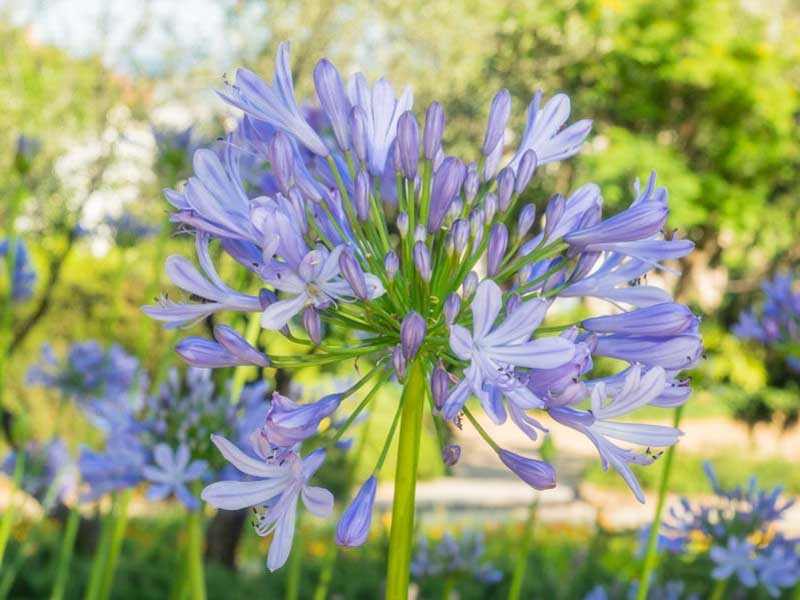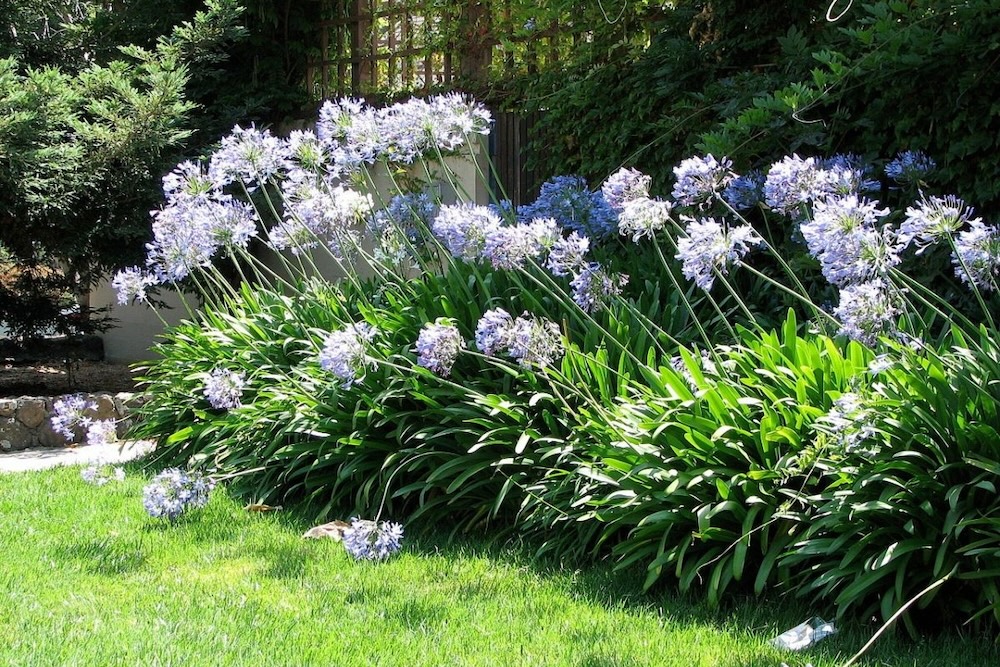Agapanthus Expanding Problems: Soil, Sunlight, and Watering
Agapanthus Expanding Problems: Soil, Sunlight, and Watering
Blog Article
Releasing the Secret to Effective Agapanthus Growing: Tips and Techniques for a Flourishing Yard
In the world of horticulture, growing agapanthus efficiently calls for a strategic method that encompasses various aspects of plant care. With careful attention to information, one can unlock the secrets to nurturing these stunning blooms, leading to a yard that thrives with elegance and vibrancy. By recognizing the subtleties of agapanthus farming, one can produce an atmosphere where these plants flourish and grow abundantly. In the adhering to conversation, we will explore important tips and techniques that will certainly assist you towards a thriving agapanthus yard, supplying understandings right into ideal methods, soil problems, sprinkling techniques, and a lot more.
Planting Agapanthus: Ideal Practices
When growing Agapanthus, proper dirt preparation is important for making certain successful growth and growth of these attractive blossoms. Agapanthus, typically understood as Lily of the Nile or African lily, grows in well-draining soil with a somewhat acidic to neutral pH degree - Agapanthus. Prior to planting, it is important to amend heavy clay dirts with natural matter such as compost or peat moss to enhance drain and provide important nutrients for the plants
To grow Agapanthus, pick a place that obtains full sunlight to partial color, as this will certainly promote healthy and balanced development and abundant blooming. Dig a hole two times the size of the plant's root ball and put the Agapanthus at the exact same deepness it was previously growing. Gently backfill the opening with soil, pushing down firmly to eliminate any kind of air pockets around the roots.
Water the newly planted Agapanthus extensively and continue to keep the dirt equally moist, particularly during the plant's energetic expanding period. Agapanthus. Applying a balanced fertilizer once a month can additionally support the plant's growth and flowering. By following these ideal practices for planting Agapanthus, you can create a spectacular display of these captivating blossoms in your yard
Ideal Soil Issues for Agapanthus
For optimum development and growing success of Agapanthus plants, making certain the soil conditions are ideal is vital. Agapanthus thrives in well-draining soil with a somewhat acidic to neutral pH level varying from 6.0 to 7.0. This sort of soil permits for sufficient water drainage, stopping waterlogging which can cause root rot. To improve dirt drainage, think about adding raw material such as compost or peat moss when preparing the planting website. Moreover, Agapanthus favors dirt that is rich in nutrients, so including a well balanced fertilizer during the growing season can advertise healthy growth and vivid flowers.

Watering and Feeding Tips
To guarantee healthy development and dynamic blooms, proper watering and feeding strategies are crucial for effective Agapanthus growing. Agapanthus plants benefit from regular watering, specifically throughout the growing season.
When it involves feeding Agapanthus, a balanced fertilizer with equal components nitrogen, phosphorus, and potassium can be used in the spring to advertise healthy and balanced growth and blooming. Slow-release fertilizers are suitable Bonuses for supplying nutrients gradually over an extended duration. Prevent over-fertilizing, as this can lead to too much foliage development at the expenditure of flowers.
Additionally, integrating raw material like compost right into the soil can improve nutrient levels and boost soil framework, helping in the total health and wellness of the Agapanthus plants. By following these watering and feeding ideas, gardeners can guarantee their Agapanthus plants thrive and create spectacular display screens of flowers.
Trimming and Deadheading Methods
Proper pruning and deadheading strategies play a critical function in keeping the health and aesthetic appeals of Agapanthus plants, complementing the crucial practices of watering and feeding for effective cultivation. Trimming Agapanthus entails eliminating invested flower heads, yellowing or dead leaves, and overall shaping of the plant to advertise better growth. Deadheading, the procedure of getting rid of discolored flowers, not just enhances the plant's appearance but likewise encourages additional growing.
When deadheading Agapanthus, it is advisable to snip off the flower stem at the base making use of sharp, clean shears. This process redirects the plant's power from seed production back right into root try here and foliage growth, promoting a much healthier and extra robust plant. Regular deadheading can expand the flowering period of Agapanthus and stop self-seeding, which can bring about overcrowding.
In terms of pruning, Agapanthus usually take advantage of a light trim after flowering to clean up the plant and urge fresh development. Reducing the spent flower stems and removing any kind of broken or dead vegetation assists preserve the plant's vigor and overall look. Nonetheless, it is crucial to avoid reducing right into the crown of the plant, as this can deteriorate its health and wellness.

Protecting Agapanthus From Pests and Diseases
Implementing reliable bug and disease management approaches is vital to protecting the health and vigor of Agapanthus plants in cultivation. Agapanthus are generally durable plants, however they can still succumb to various parasites and illness if not appropriately cared for. One common bug that affects Agapanthus is the Agapanthus borer, a caterpillar that passages into the plant, triggering damage to the blossoms and fallen leaves. To avoid infestations, routine inspection of the plants is crucial. If borers are discovered, they can be manually eliminated, or insecticidal soap can be made use of as a control action.
In addition to bugs, Agapanthus are susceptible to illness such as origin rot and fungal fallen leave spots. These problems can often be avoided by making certain proper drainage and preventing overwatering. Affected parts of the plant must be promptly eliminated to stop more spread if signs of disease appear. Fungicides may likewise be used as a therapy measure, adhering to the supplier's directions very carefully. By remaining alert and dealing with pest and condition issues promptly, gardeners can help their Agapanthus thrive and grow.

Verdict
In conclusion, effective farming of agapanthus requires appropriate planting techniques, excellent soil conditions, appropriate watering and feeding, regular pruning and deadheading, and security from parasites and diseases. By adhering to these tips and techniques, garden enthusiasts can ensure a flourishing yard loaded with gorgeous agapanthus blossoms. Agapanthus. Remember to maintain constant care and interest to detail to advertise the wellness and long life of these stunning plants
When planting recommended you read Agapanthus, proper soil preparation is important for making sure effective development and growth of these attractive blossoms.Water the freshly grown Agapanthus extensively and proceed to maintain the dirt uniformly wet, especially during the plant's energetic expanding period.For ideal growth and flowering success of Agapanthus plants, guaranteeing the soil conditions are ideal is crucial. When planting or hair transplanting Agapanthus, make sure the soil is well-prepared to offer the necessary foundation for the plants to establish themselves effectively. One common pest that affects Agapanthus is the Agapanthus borer, a caterpillar that passages right into the plant, triggering damage to the fallen leaves and blossoms.
Report this page